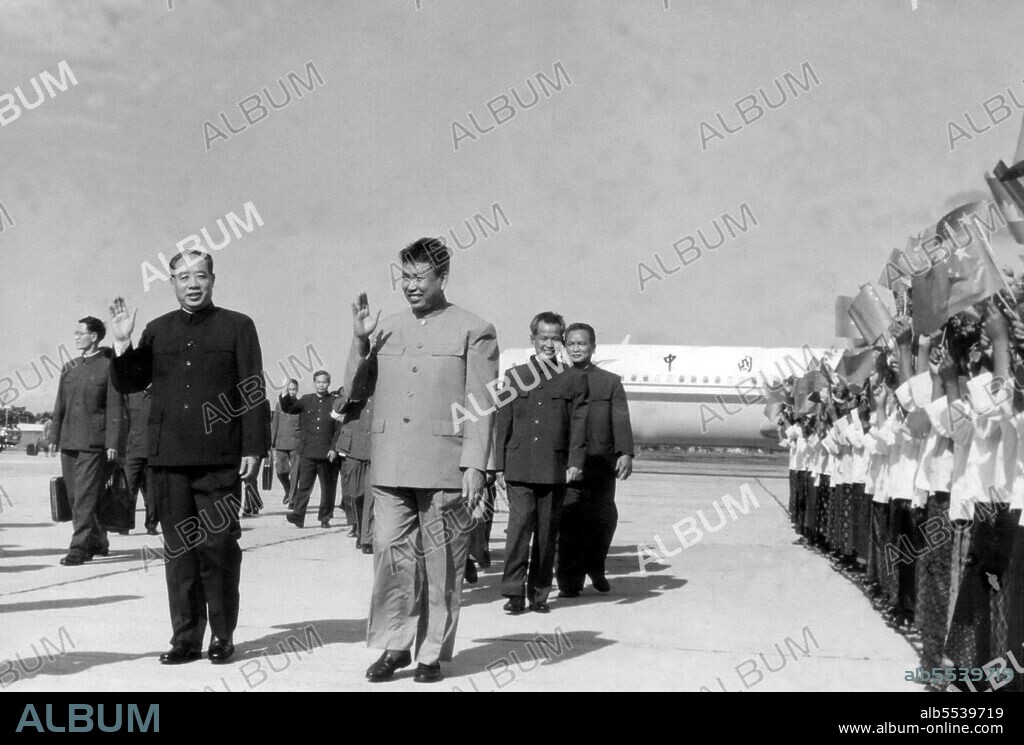alb5539719
Cambodia: The Khmer Rouge top leadership at Pochentong Airport welcoming a Chinese delegation, c. 1976.

|
Añadir a otro lightbox |
|
Añadir a otro lightbox |



¿Ya tienes cuenta? Iniciar sesión
¿No tienes cuenta? Regístrate
Compra esta imagen.
Selecciona el uso:

Título:
Cambodia: The Khmer Rouge top leadership at Pochentong Airport welcoming a Chinese delegation, c. 1976.
Descripción:
Ver traducción automática
Pol Pot (centre, front) followed by Khieu Samphan (centre right) and Nuon Chea (rear, right). The Khmer Rouge, or Communist Party of Kampuchea, ruled Cambodia from 1975 to 1979, led by Pol Pot, Nuon Chea, Ieng Sary, Son Sen and Khieu Samphan. It is remembered primarily for its brutality and policy of social engineering which resulted in millions of deaths. Its attempts at agricultural reform led to widespread famine, while its insistence on absolute self-sufficiency, even in the supply of medicine, led to the deaths of thousands from treatable diseases (such as malaria). Brutal and arbitrary executions and torture carried out by its cadres against perceived subversive elements, or during purges of its own ranks between 1976 and 1978, are considered to have constituted a genocide.
Crédito:
Album / Pictures from History/Universal Images Group
Autorizaciones:
Tamaño imagen:
5000 x 3378 px | 48.3 MB
Tamaño impresión:
42.3 x 28.6 cm | 16.7 x 11.3 in (300 dpi)
 Pinterest
Pinterest Twitter
Twitter Facebook
Facebook Copiar enlace
Copiar enlace Email
Email
